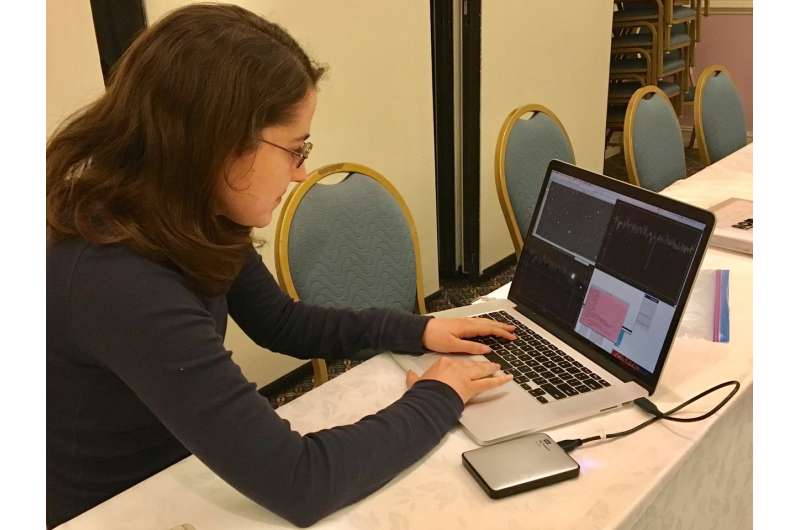New Horizons team prepares for stellar occultation ahead of Ultima Thule flyby

Successfully observing an object from more than four billion miles away is difficult, yet NASA's New Horizons mission team is banking that they can do that—again.
Preparations are on track for a final set of stellar occultation observations to gather as much information about the size, shape, environment, and other conditions around New Horizons' next flyby target, the ancient Kuiper Belt object 2014 MU69, nicknamed Ultima Thule.
The occultation team used data from the Hubble Space Telescope and European Space Agency's Gaia satellite to pinpoint two roughly 18.5-mile (30-kilometer) strips on Earth where Ultima Thule will cast its shadow on August 4th. Telescopes will be placed at multiple points in those strips to attempt to observe the occultation when Ultima Thule passes in front of a star and momentarily blocks its light. In a similar effort in 2017, the team struck observation gold from multiple sites in Patagonia, Argentina. Fighting high winds and extreme winter conditions from multiple sites in Patagonia, team members captured a similar occultation from five sites, a major success that taught them much about the flyby target and helped define the flyby distance of 2,175 miles (3,500 kilometers).
"Gathering occultation data is an incredibly difficult task," said New Horizons occultation event leader Marc Buie of the Southwest Research Institute, Boulder, Colorado, who also discovered Ultima Thule about a year before New Horizons flew past Pluto in July 2015. "We are literally at the limit of what we can detect with Hubble and the amount of computer processing needed to resolve the data is staggering."
The final occultation observations of Ultima Thule are scheduled for Aug. 4 in Senegal and Colombia, with Buie again leading the effort. "Our team of almost 50 researchers using telescopes in Senegal and in Colombia are certainly hoping lightning will strike twice and we'll see more blips in the stars," he said. "This occultation will give us hints about what to expect at Ultima Thule and help us refine our flyby plans."
Preparations for the occultation are intense. Travel to the remote locations while carrying sensitive equipment is a challenge. Several days ahead of the observations, the teams will begin to rehearse every detail of the observation, so they can adapt to variable weather conditions and other adverse conditions. Enthusiasm and support for this effort from the Senegal and Colombia governments has been exceptional, as well as that from the resident U.S. embassies and the French, Senegalese, Colombian, and Mexican astronomy communities—resulting in a truly multinational collaboration.
"If the team is successful, the results will help guide our planning for the flyby," said Alan Stern, New Horizons mission principal investigator, also of the Southwest Research Institute.
Ultima Thule and other Kuiper Belt objects hold clues to the formation of planets and the "third zone" of our solar system in which they reside, the wide expanse beyond the giant planets. Last year's observations showed that Ultima Thule could be either two objects that orbit each other (a "binary"), two objects that touch (a "contact binary"), and may possibly also sport a moon. Its size is estimated to be 20 miles (30 kilometers) long if a single object or 9-12 miles each (15-20 kilometers) if two objects.
For the past several weeks, the New Horizons mission team has been collecting navigation tracking data and sending commands to New Horizons' spacecraft onboard computers to begin preparations for the Ultima Thule flyby; the flyby activities include memory updates, Kuiper Belt science data retrieval, and a series of subsystem and science-instrument checkouts. Next month, the team will command New Horizons to begin making distant observations of Ultima Thule, images that will help the team refine the spacecraft's course to fly by the object.
When New Horizons whizzes past Ultima Thule on New Year's Day, at a distance of more than 4 billion miles (6.5 billion kilometers) from Earth, the object will become the most distant object ever explored.
Provided by Johns Hopkins University





















